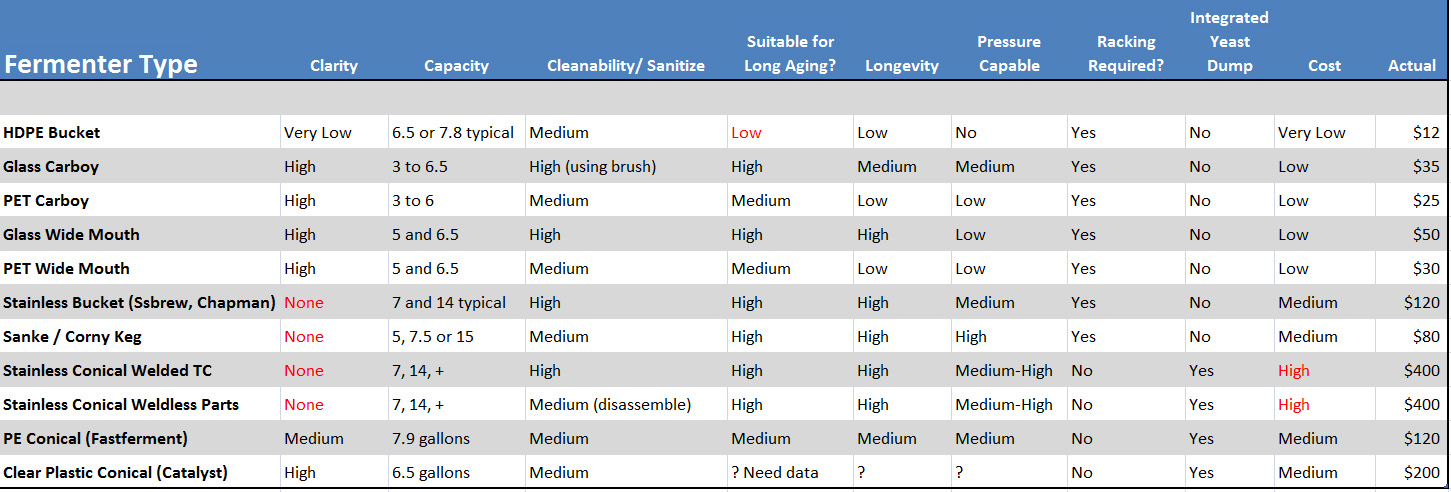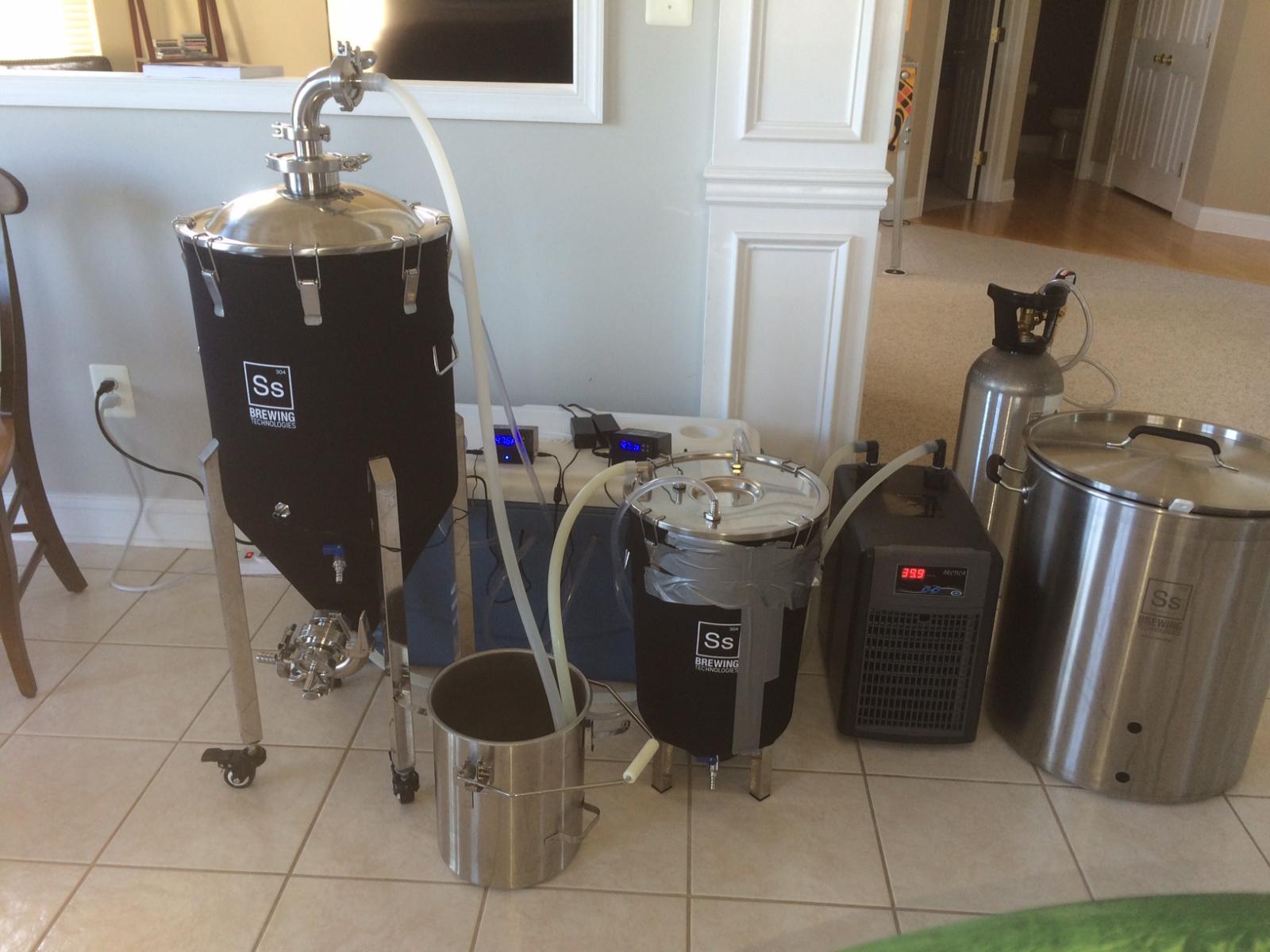After reading a lot of opinions on a few threads about ideal fermenters and why one is better or a better value than another, I got to thinking that most people never really look at all the available options and consider the pros and cons across the entire marketplace.
Everyone has different needs and budgets of course so this is just a table of data which I hope is as unbiased as possible. You pick which features are most important to you and as long as they fall within your budget, you're golden.
Hopefully the column labels are self explanatory but a few notes:
"Suitable for Aging" is related to oxygen permeability of the material. You could also argue that it relates to how well the lid/closure seals.
"Racking Required" and "Integrated Yeast Dump" are interrelated. By racking, I mean having the need to transfer the beer out prior to adding priming sugar in the case of bottling. If you can dump the yeast out of the primary, you can add priming sugar directly and bottle out of the same vessel. Even if you keg your beer, racking to secondary would be necessary for lagers if "racking required" is yes.
Comments, fact checking, etc welcome.

Everyone has different needs and budgets of course so this is just a table of data which I hope is as unbiased as possible. You pick which features are most important to you and as long as they fall within your budget, you're golden.
Hopefully the column labels are self explanatory but a few notes:
"Suitable for Aging" is related to oxygen permeability of the material. You could also argue that it relates to how well the lid/closure seals.
"Racking Required" and "Integrated Yeast Dump" are interrelated. By racking, I mean having the need to transfer the beer out prior to adding priming sugar in the case of bottling. If you can dump the yeast out of the primary, you can add priming sugar directly and bottle out of the same vessel. Even if you keg your beer, racking to secondary would be necessary for lagers if "racking required" is yes.
Comments, fact checking, etc welcome.








![Craft A Brew - Safale BE-256 Yeast - Fermentis - Belgian Ale Dry Yeast - For Belgian & Strong Ales - Ingredients for Home Brewing - Beer Making Supplies - [3 Pack]](https://m.media-amazon.com/images/I/51bcKEwQmWL._SL500_.jpg)































